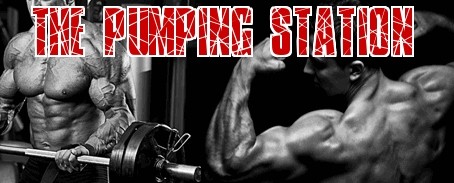Metabolic Conditioning Workouts
By Stefan Ferron B.A., B.Kin., B.Ed., CPT
I first discovered this style of training approximately two years ago in an article written by Matt Brzycki, Coordinator of Health Fitness, Strength and Conditioning , Princeton University. Metabolic conditioning is essentially a combination of intensive muscular training coupled with intensive aerobic training. Make no mistake, this combination is a potent one. Just one of these workouts will tax your body's complete musculature and cardiovascular system to the absolute limit if performed correctly.
3x3
The design of the program is simple, basic at best, and follows a 3x3 format. The design can best be described as a multiple joint leg/hip movement, followed by a multiple joint chest movement, followed by a multiple joint upper back movement, done in three consecutive sets to absolute muscular failure, performed without rest in between sets. One could describe these workouts as "circuits." However, please don't confuse these with the typical circuit training done at the local health spa, there's a world of difference, not to mention a world of hurt, between the two. Figures 1, 2 and 3 give listings of the exercises I believe best suited for metabolic conditioning purposes. There is nothing fancy or "scientific" about them, they are simply basic and brutal.
Figure 1Legs/Hips
Back Squat
Front Squat
Hacklift
Deadlift
Stiff Legged Deadlift
Trap Bar Deadlift
Dumbbell Deadlift
Leg Press
Figure 2Chest
Weighted Dips
Barbell Bench Press
Barbell Incline Press
Dumbbell Bench Press
Dumbbell Incline Press
Weighted Push Ups
Figure 3Upper Back
Weighted Chins
Barbell Rows
Dumbbell Rows
PulldownsThe following paragraph is taken directly from Brzycki's article and describes the repetition schemes:
The first time through the movements, an athlete should reach muscle failure at about 20 reps for the hip exercise, 12 for the chest exercise and 12 for the upper back exercise. When the sequence is repeated the second time, the repetition goals would be 15 for the hip exercise, 10 for the chest exercise and 10 for the upper back exercise. The third time through the movements should have goals of 12 for the hip exercise, 8 for the chest exercise and 8 for the upper back exercise. In summary, the repetition goals for these movements should be 20, 15 and 12 for the hip exercise and 12, 10 and 8 for the chest and upper back exercises.
FORMATThis style of training lends itself to endless possibilities and can be modified in any number of ways. Figure 4 is one option. This workout would be performed twice a week, perhaps Monday and Thursday or Tuesday and Saturday.
Figure 4Monday/Thursday
Trap Bar Deadlift 300 lbs. 20 Weighted Dips BW+20 lbs. 12 Weighted Chins BW+20 lbs. 12 Trap Bar Deadlift 265 lbs. 15 Weighted Dips BW+10 lbs. 10 Weighted Chins BW+10 lbs. 10 Trap Bar Deadlift 225 lbs. 12 Weighted Chins BW 8 Weighted Chins BW 8
Figure 5 provides another option where the above workout would be performed on one day while varying exercises would be performed on another.
Figure 5Monday
Trap Bar Deadlift 300 lbs. 20 Weighted Dips BW+20 lbs. 12 Weighted Chins BW+20 lbs. 12 Trap Bar Deadlift 265 lbs. 15 Weighted Dips BW+10 lbs. 10 Weighted Chins BW+10 lbs. 10 Trap Bar Deadlift 225 lbs. 12 Weighted Chins BW 8 Weighted Chins BW 8
Thursday
Back Squat 225 lbs. 20 Bench Press 180 lbs. 12 Barbell Rows 180 lbs. 12 Back Squat 200 lbs. 15 Bench Press 160 lbs. 10 Barbell Rows 160 lbs. 10 Back Squat 185 lbs. 12 Bench Press 135 lbs. 8 Barbell Rows 135 lbs. 8
1x2x3Yet another option is shown in Figure 6. This workout is one that I designed based on the premise that after you complete one set of 20 reps (or 30, or 50) in the squat, deadlift, etc. you wouldn't have the ability to perform anymore leg/hip work if you really pushed yourself. I call it the 1x2x3. "1" is the number of lower body exercises performed, "2" is the number of upper body exercises performed and "3" is the number of times the two upper body exercises are done consecutively. The same general rules apply for the 1x2x3 as the 3x3; no rest between sets and performing each exercise to absolute muscular failure.
Figure 6Monday/Thursday
Trap Bar Deadlift 350 lbs. 20 Weighted Dips BW+20 lbs. 12 Weighted Chins BW+20 lbs. 12 Weighted Dips BW+10 lbs. 10 Weighted Chins BW+10 lbs. 10 Weighted Chins BW 8 Weighted Chins BW 8
As you can see the two final sets of lower body work have been eliminated. Doing this would no doubt cut back slightly on the conditioning effect, however, I believe that this could be compensated for with the use of heavier weights on your first and only set. As shown in Figure 5, this style workout could also be modified to ensure the use of varying exercises. This would ensure fresh challenges every week as well as providing a slightly differing growth stimulus for your body.I believe anyone who dismisses this type of routine outright would be selling themselves short. However, it's no easy gauntlet. No matter how you cut it these workouts are brutal. Every muscle in your body is taxed to the limit, as is your heart, lungs and circulation. Whether you're a competitive athlete or garage gym dweller these are time efficient and effective ways of training that should not be overlooked in the quest for strength and health.
Click Here to Sign Up for Your Free Bodybuilding Magazine Subscription
